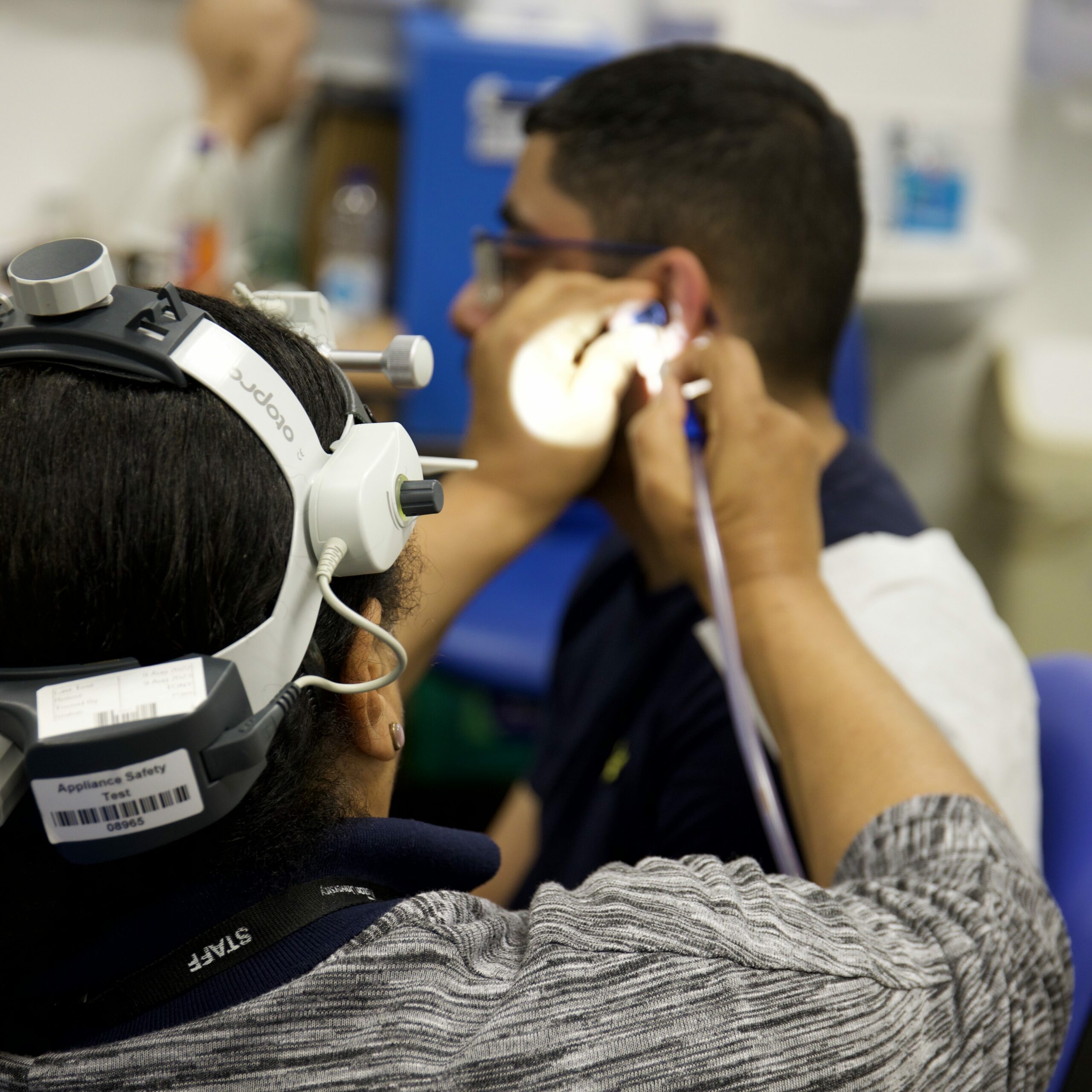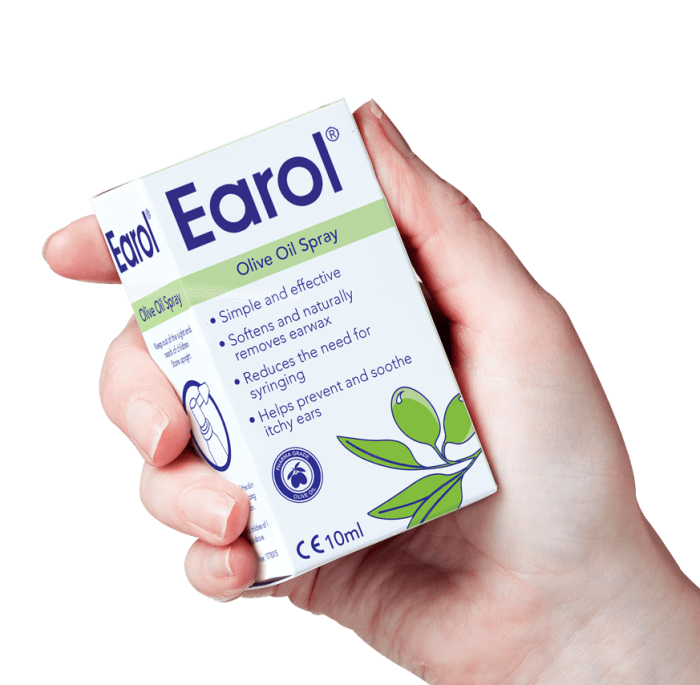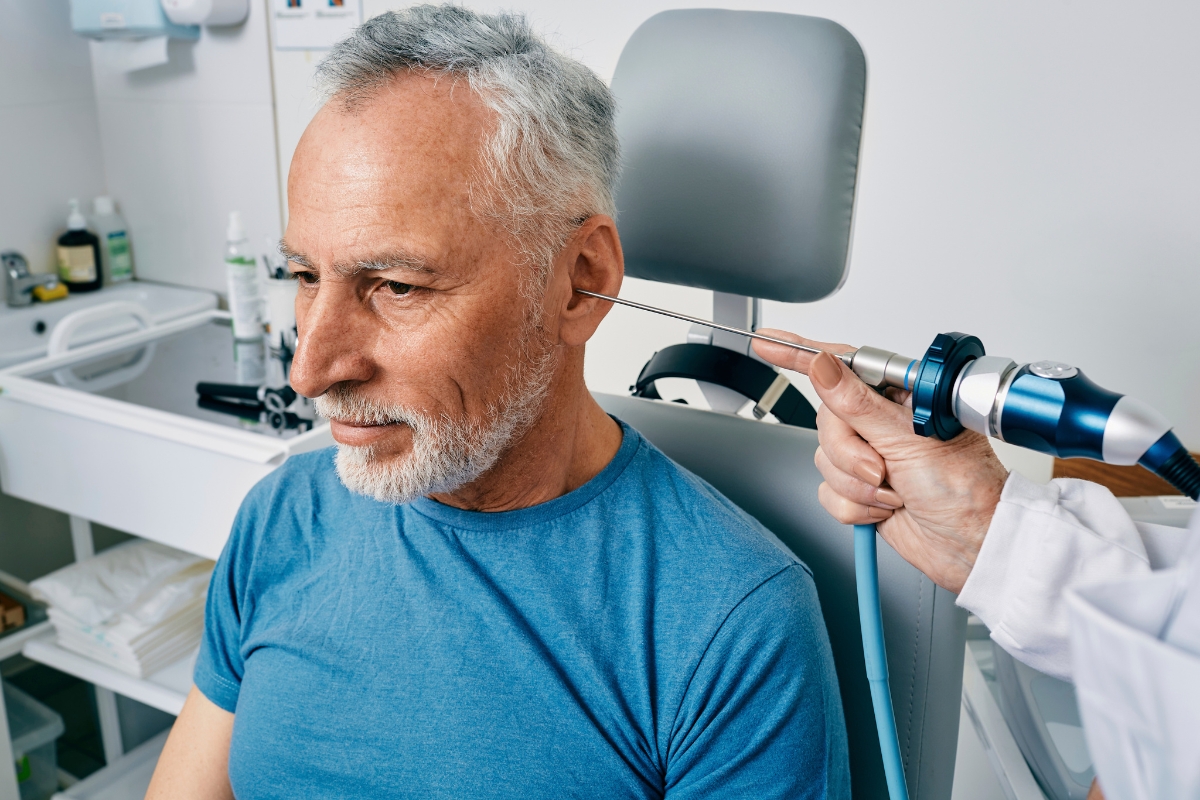The History Of Earol®
Clinically proven to soften and break up impacted earwax to prepare the ear canals for clinical dewaxing, Earol® products are highly recommended by audiologists, pharmacists and ear care specialists.1 In this article, we investigate how our products fit into the history of ear wax removal and why older methods fell by the wayside.

About Earol Olive Oil Spray
Our product is founded on a desire to provide a simple solution for wax removal, without the fuss of drops. Ear drops can be messy and difficult to use, and getting the right amount of product into the ear canal is a challenge.
To overcome this, we designed a spray that disperses the oil evenly into the ear canal. The simple, tapered actuator directs a precise, metered dose, so users can be confident they have applied the correct amount.
The oil itself is a blend of pharmaceutical-grade olive oil and mineral oil. This formula has been proven to soften and loosen earwax build-ups and aid their removal.First marketed in 2006, Earol® has provided natural, effective ear care with our proven formula. We have since adapted the product to create EarolSwim®, preventing water trapping in ears.

The History Of Ear Wax Removal
Ear wax removal has been an essential part of personal hygiene since ancient times, with artefacts found in archaeological sites giving clues as to the methods our ancestors used.
“Ear Scoops”
In ancient Roman and Greek settlements, archaeologists have found many small spoons made from copper alloy and bronze, each between 5 and 12 centimetres long with a round head, 5mm across.2,3,4 Some are carved and decorated while others have a more simple design. Ear scoops have been found at sites in Scandinavia and Eastern Asia, so are thought to have been a widespread tool in ancient times.5
These tiny spoons are still used in East Asia and South Asia today to scoop out dry earwax.6 However, healthcare professionals do not recommend putting anything directly into the ear canal as this can push wax deeper, causing build-up.7 The tool may also introduce bacteria, harm the lining of the ear canal or damage the eardrum or middle ear causing permanent hearing loss.7
Byzantine Herbal Ear Treatments
Between 324-1453C.E., Byzantine medical writers recorded symptoms and treatments for ear conditions based on ancient Greek medical texts and their own experience. The knowledge recorded in these early texts is thought to have influenced medicine in mediaeval Europe and possibly the rest of the world.
Treatments for various conditions such as otitis, deafness, vertigo, tinnitus and earwax included applying animal fats, mineral oils and herbal substances to the ear.8 The mixture may have been applied as ear drops or as a poultice, where a mixture of herbs is bandaged over the affected area for a period of time.
They may also have been applied as a ‘clyster’, using a syringe to flush the ear with the treatment.8
Roman Ear Wax Removal
In the 1st Century CE, Roman medical writer Aulus Cornelius Celsus wrote about various ear conditions in De Medicina. Celsus mentions a type of piston-operated syringe, referred to as ‘clyster oricularis’9 or an ear syringe, used to “wash out the ear with diluted wine”10 to remove discharge from ears.
The use of ear syringes is not well documented in the following centuries and is thought to have fallen out of favour before a revival at the beginning of the 1800s, and are still used in clinical ear care today.11
To soften wax blockages for removal, Celsus recommends applying ‘honey or leek juice’, ‘vinegar containing a little soda’, or ‘oil’ before removing with an ear scoop.12 This advice is almost two thousand years old, and olive oil has been clinically proven to soften earwax build-ups for removal.13
Timeless Care for Your Ears
Today, we know that oil-based solutions are effective at softening earwax for removal by syringe, micro suction and irrigation techniques. There are many products which offer to soften earwax blockages, with different formulations and side effects. Our products are clinically proven to aid ear wax removal using the most natural and readily available ingredient: olive oil. We know that our formula works well, and we’ve not changed it since.
Natural Ingredients: Gentle Care
While other ear care products rely on hydrogen peroxide, Earol® contains no harsh chemicals or solvents. Using a natural blend of oils, including olive oil, our ear spray is gently effective, with no recorded side effects.
Because of their gentle effect, our ear sprays are suitable for use with children aged 12 months+ and are popular in all age brackets.
Working with Healthcare Professionals
Our products are designed to keep our customers’ ears healthy and relieve painful earwax blockages. To be certain they will have the desired effects, we work with healthcare professionals in the NHS to develop and test our products to ensure they are effective and safe.
In our surveys, we have found that 93% of ear care specialists are likely to recommend Earol® Olive Oil Spray to aid in the removal of ear wax blockages from the ear canal.1
Available, Affordable Solutions
All Earol® products are available over-the-counter, so customers do not need to wait for a prescription to be filled before they can start treatment. Avoiding delays is important, as preparing for ear wax removal requires five days of continuous use. Like many over-the-counter ear treatments, Earol® is also cheaper than the cost of prescriptions.
References
1 Audiology Questionnaire Report, survey completed by 136 ear care specialists, 2019.
2 Eckardt H, ‘Technologies of the body: Iron Age and Roman grooming and display’ in Rethinking Celtic Art Ed by Garrow D. 2008, Oxbow Books p.118 [https://books.google.co.uk/books?hl=en&lr=&id=25f9AwAAQBAJ]
3 Roman. Ear scoop with moulded collars, Copper Alloy, 3.0mm Diam, 5x122mm, in Amgueddfa Cymru, [https://museum.wales/collections/online/object/05b5b004-1ca9-3acb-986f-2f20aae8d071/Roman-copper-alloy-ear-scoop/footer/]
4 Greek. Ear Spoon, 6th century B.C.E., probably. Bronze, 1/4 x Diam. 3/16 x 3 1/8 in. (0.6 x 0.4 x 8 cm). Brooklyn Museum, Brooklyn Museum Collection, [https://www.brooklynmuseum.org/opencollection/objects/119482]
5 Nurse Clinic, ‘History of Ear Wax Removal’ 2023 at https://thenurseclinic.co.uk/2023/01/18/history-ear-wax-removal/
6 https://web.archive.org/web/20070914024004/http://swindlemagazine.com/issue10/the-art-of-ear-picking/
7 Dean L. ‘Don’t put anything smaller than your elbow in your ear: the genetics of ear wax.’ 2006 Oct 11. In: Dean L, McEntyre J, editors. Coffee Break: Tutorials for NCBI Tools [Internet]. Bethesda (MD): National Center for Biotechnology Information (US); 1999-. Available from: https://www.ncbi.nlm.nih.gov/books/NBK2333/
8 Lascaratos, J, and D Assimakopoulos. “From the roots of otology: diseases of the ear and their treatment in Byzantine times (324-1453 A.D.).” The American Journal of Otology vol. 20,3 (1999): 397-402.
9 Celsus, trans. By Spencer, De Medicina, 1935, https://archive.org/details/demedicina02celsuoft/page/243/, p.243
10 De Medicina, pp.235-7
11 Feldmann, H. “2000-year history of the ear syringe and its relationship to the enema. Images from the history of otorhinolaryngology, represented by instruments from the collection of the Ingolstadt Medical History Museum”. Laryngo- rhino- otologie vol. 78,8 (1999): 462-7. doi:10.1055/s-2007-996909
12 De Medicina, p.239
13 Hand, C., & Harvey, I. (2004). The effectiveness of topical preparations for the treatment of earwax: A systematic review. The British Journal of General Practice, 54(508), 862-867. https://www.ncbi.nlm.nih.gov/pmc/articles/PMC1324923/





